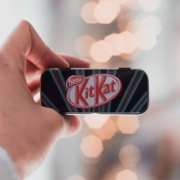Airbnb And The Power of Localization
In a recent Wall Street Journal interview with Brian Cheskey, CEO and a founder of Airbnb, reporter Preetika Rana discussed the way in which Airbnb survived during the pandemic and is now flourishing.
Although there were several financial measures that Airbnb employed to sustain itself during the crisis of Covid lockdowns and quarantines, one of the most important Airbnb strategies was to leverage the power of localization.
Globalization, personalization and localization shape how brands must be managed. These three dynamics are colliding and intertwined. The challenge for marketers is to harness the strengths of each to build strong brands.
Globalization delivers a familiar, consistent, and reliable branded experience. Personalization delivers a branded experience that recognizes and reflects the customer and is exclusively designed to meet an individual’s needs for a particular occasion. Localization delivers a relevant, respectful, place-based branded experience.
Globalization provides us with the comfort of seeing familiar brands anywhere we travel. We appreciate their regularity and standardization. We are calmed by their familiarity and security. Perceiving a brand to be a global leader enhances the brand’s status and stature.
Personalization creates valued, unique experiences that meet an individual’s physical, psychological, social and emotional needs. Personalization reinforces respect, status, and positive self-image.
Personalization is different from customization. Customization focuses on features and functions – the practical aspects of a brand – readying the brand for a transaction. A custom-made Nike shoe is about finding the features you like – colors, stripes, laces, and so on – creating a transactional event. It is similar to finding your measurements and fabrics that customize a bespoke silk suit or shirt. Personalization is experiential. It happens when, based on who you are and what you like, an entire branded experience is created.
Localization provides us with that special sense of place. Locally sourced, locally crafted, locally owned, regionally authentic, one-of-a-kind, and so on bring a sense of cultural, ethnic, economic and social connection. Artisanal cheeses from a specific region, local distilleries and breweries, grass-fed cows on local farms, cage-free chickens, arts and crafts, non-GMO, fresh, organic, locally made employing local people and other local elements and activities that bring “real” into our lives continue to grow and are increasingly attractive and affordable.
Airbnb is a global entity. It has rentals around the world. Airbnb is also a personalized brand. Its website, for example, makes it easy for customers to select the exact type of home rental suited to their needs and desired experiences.
But, it is the brand’s leveraging of localization that saw it through the worst of the pandemic. According to Mr. Cheskey, Airbnb’s localization strategy was threefold.
Airbnb capitalized on the desire for staycations. Briefly, a staycation is when people either stay at home or venture only as far as their locale. It can also mean taking a vacation in one’s own country as opposed to traveling abroad. During the pandemic, as with the financial crisis of 2008, staycations became popular. Airbnb switched its emphasis to local travel and local stays.
Additionally, with office closures, office workers could work remotely from anywhere. This also created an opportunity for Airbnb. Some workers left for more exotic areas. But, many workers chose to relocate locally and domestically. Rather than work from a hotel room, working from a home in one’s locale offered many risk-free benefits.
Lastly, with salaries and overtime cut for many workers, hosting became a way for many people to make many money. For erstwhile local travelers and remote workers, an Airbnb stay was a way to save money on stays away from home, being less expensive than a hotel. In other words, with Airbnb, one could locally “make a buck” and “save bucks.”
One of the great elements of localization is its enhancement of the concept of neighborhood. During the pandemic, neighborhood was important. Neighborhood is safe. Neighborhood is known. Neighborhood is comfortable and secure. Neighborhood is predictable and reliable. Neighborhood allowed for school pods, for example, where children could learn with their local school pals. Neighborhood grows from people living near each other in time, space and relationships. When the pandemic isolated us from our normal social contacts, the people in our neighborhood became our sole human contact outside of our families or roommates. Neighborhood has always been much more about the people than the place.
Many brands tend to focus on globalization and personalization. In fact, because of digitalization, personalization tends to receive a lion’s share of resources. However, localization has an important role to play by bringing people together and by enhancing the nearby neighborhood. Localization delivers place-based benefits such as local farmers’ markets and crafts. With a focus on digital, we sometimes overlook the fact that localization of experiences delivers great results. This was certainly true for Airbnb. Localization helped keep Airbnb afloat when hotel chains were suffering. In our virtual reality-augmented reality world, nearness has value. Localization is extremely meaningful in a world where the emphasis is on virtual, digital reality.










